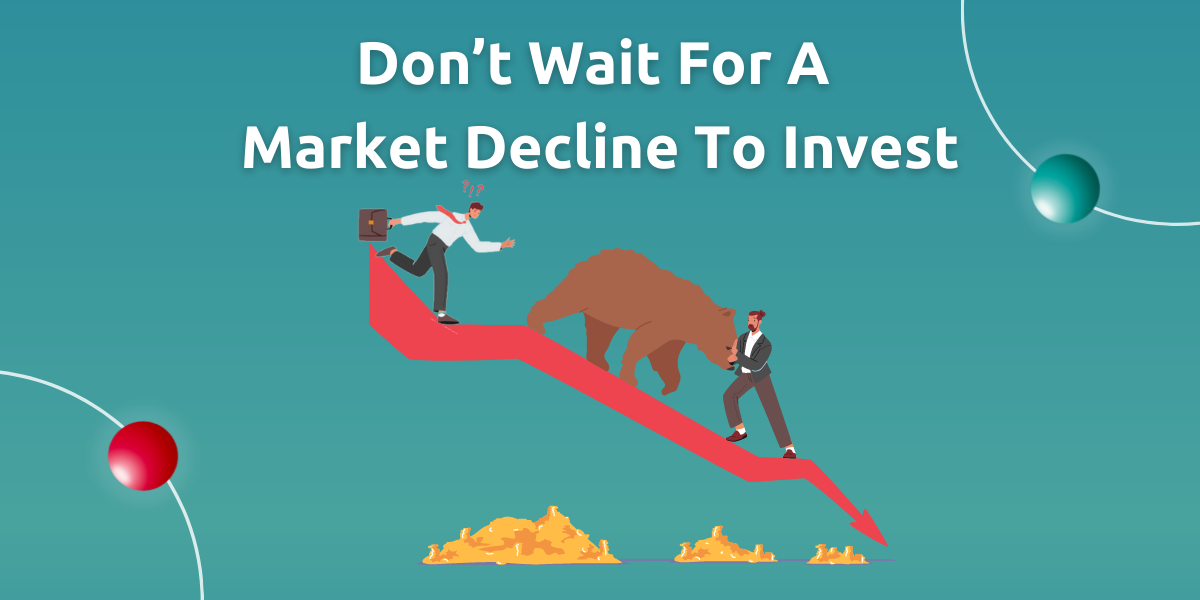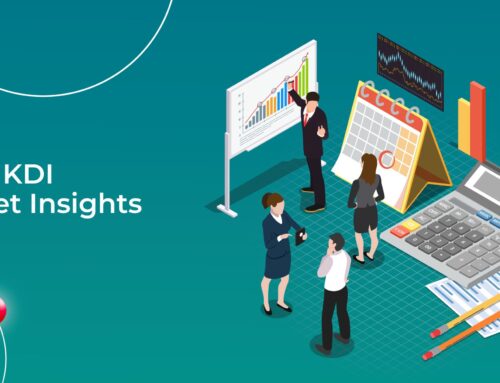Don’t Wait For A Market Decline To Invest

How often do your friends or family members brag about how they made huge profits from shares, cryptocurrency, gold or other such investments by “buying low and selling high”?
What no one talks about is the 10 other investments they made that did not pan out: the ones where they were told to ride a wave on a rising asset only to lose big when the market crashed.
“Buy low, sell high” is easier said than done, given the amount of self-discipline needed to sell and not get greedy, or the amount of knowledge and effort needed to track the market daily and even hourly just to “time the market correctly.”
Many researchers have backed this up: from rating agencies to financial journals to Nobel Prize winners, studies have shown that it is almost impossible to time a market successfully compared to staying fully invested over the same period.
Even commodities investors who have played crude oil markets with every unrest in an oil producing state could not foresee the devastating effects of the global Covid-19 pandemic on travel and demand.
If the experts cannot time the market, what more the casual investor? What’s the alternative to “buy low, sell high”?
Dollar Cost Averaging (DCA)
Using dollar cost averaging (DCA), you invest your money in equal portions, at regular intervals, regardless of the ups and downs in the market. Besides taking the emotion out of decision-making, it builds wealth over the long term for riskier investments such as stocks and mutual funds.
Investors that claim to “time the market” are often driven by FOMO (the fear of missing out) on a trend, leading to inaction or hasty decisions. They could be thinking to buy low when a stock drops only to see it drop further. Conversely, they could be greedy and refuse to sell the stock and lose out on higher profits once it dips again.
DCA takes FOMO out of the picture if you commit a set amount of money (say US$1,000) to a particular asset (say the SPDR S&P 500 ETF Trust which tracks the 500 large companies listed in the U.S.) every year or quarter.

Pros and Cons of Using DCA
As shown in the diagram above, DCA is predicated on the thinking that your average cost would be lower over the long-term for assets that consistently rise in value. In this case, SPY ETF shares you invested in averaged US$378.19 over the 28-month period, much lower than the US$412.07 on May 1, 2022.
Using DCA still requires you to practise self-discipline to shut out the outside noise, and stick to your investing schedule. Since you will be holding more cash for longer while waiting for the next interval, you must invest that money in other assets with high liquidity (ability to turn into cash) instead of spending it.
There are of course caveats to using DCA. For assets like the SPY ETF that tracks blue-chip assets and benchmark indexes that have been proven to perform well over the long-term, DCA is a good strategy.
However, using DCA is not advised for volatile assets like penny stocks (below US$1.00 per share) or companies that do not have strong economic fundamentals and thus may go bankrupt during a down cycle.

Alternatives to DCA
Two common alternative strategies to DCA are value averaging and lump sum investing. Unlike DCA, these strategies require a hands-on approach and yes, market timing.
Using value averaging, you would purchase less when a stock price is high and more when the price is low. While you could conceivably make more profits this way compared to DCA, you run the risk of not having enough to invest in this strategy when a market decline hits. DCA is superior in this sense because it simplifies matters for investors and you can plan ahead how much you are setting aside to invest in the coming months or years.
Based on the belief that a blue-chip asset would rise over time (like the S&P 500 Index, gold, technology stocks or property), you could also invest a lump sum upfront. This way, you would definitely make more money than DCA as you would be coming in at a much lower price from the outset. However, unless you’ve won the lottery or some other windfall, this is a less common strategy and in fact a stressful one, if a big part of your portfolio is parked in a single asset.
How Can I Get Started on DCA?
One of the DCA caveats is that it still involves some decision-making in terms of which asset you plan to commit your investments to over the long haul. For beginner investors unfamiliar with market movements and still wanting to diversify their portfolios, ETFs allow them to use DCA while investing in a broad selection of assets.
Robo-advisors can automate your DCA strategy by taking the emotion out of investing. An exciting new entrant in the Robo-advisor space is Kenanga Digital Investing’s artificial intelligence portfolio-building tool and Robo-investor KDI Invest.
KDI Invest constructs your portfolio using a combination of ETFs listed in the U.S. and that track a large variety of assets, including equities, bonds, real estate, industries, commodities and currencies.
As shown in the “How DCA Works” diagram, using a DCA strategy may mean buying fractional shares (slices of shares) instead of single shares or lots. Well, good news! KDI Invest is one of the few market brokers that automates fractional share investing, constructing a diversified portfolio for you without compromising on precision or cost.
When you open your KDI Invest account, you can immediately build your risk profile by selecting your return objective, risk tolerance, time horizon, and liquidity preferences. KDI Invest’s proprietary artificial intelligence (AI) algorithm then segregates investors’ portfolios into five general portfolios: Very Conservative, Conservative, Balanced, Growth and Aggressive Growth.
Unlike typical fund managers that may charge you brokerage fees per transaction and thus adversely eat into your DCA profits, KDI Invest does not charge fees for investments of RM3,000 and below. Beyond that, KDI Invest fees range from 0.3% to 0.7% per year, not per transaction. Visit www.digitalinvesting.com.my/invest to find out more.
